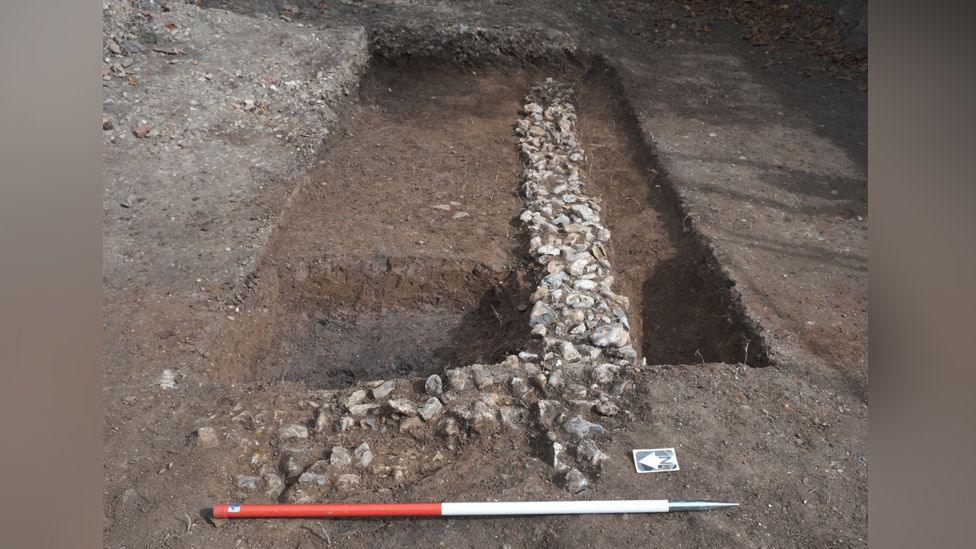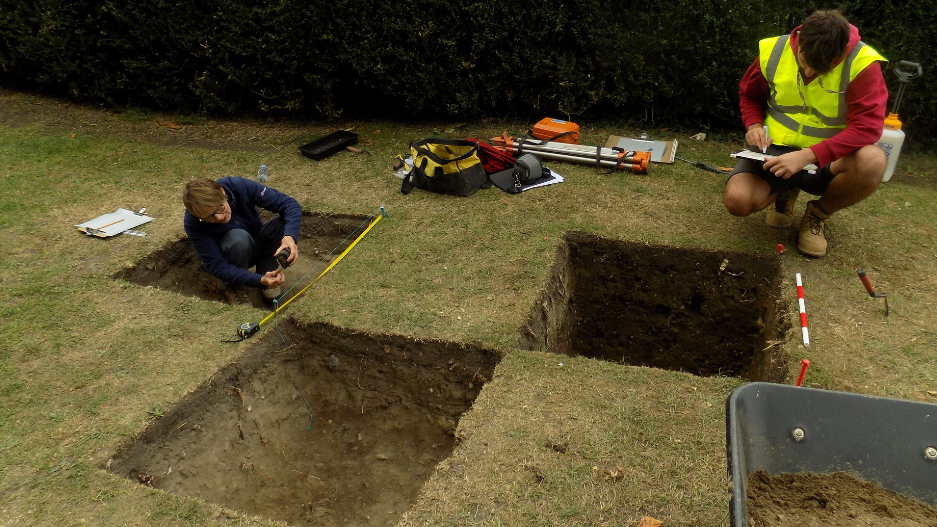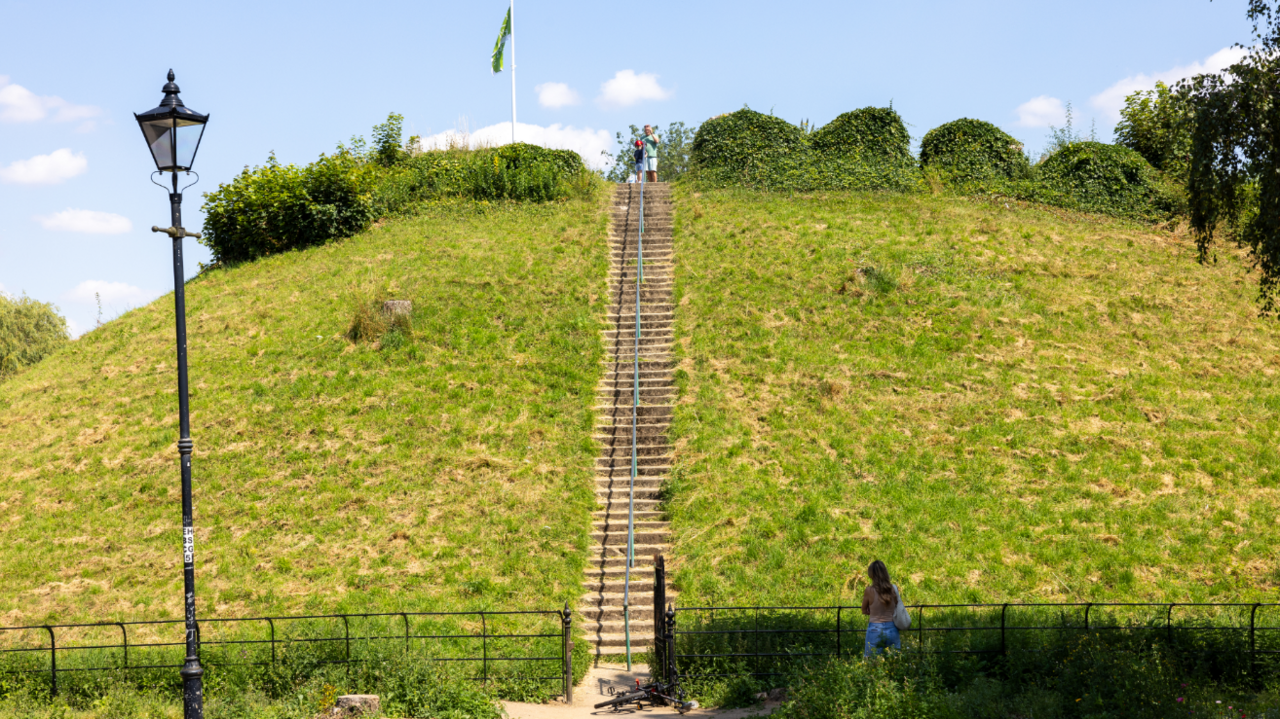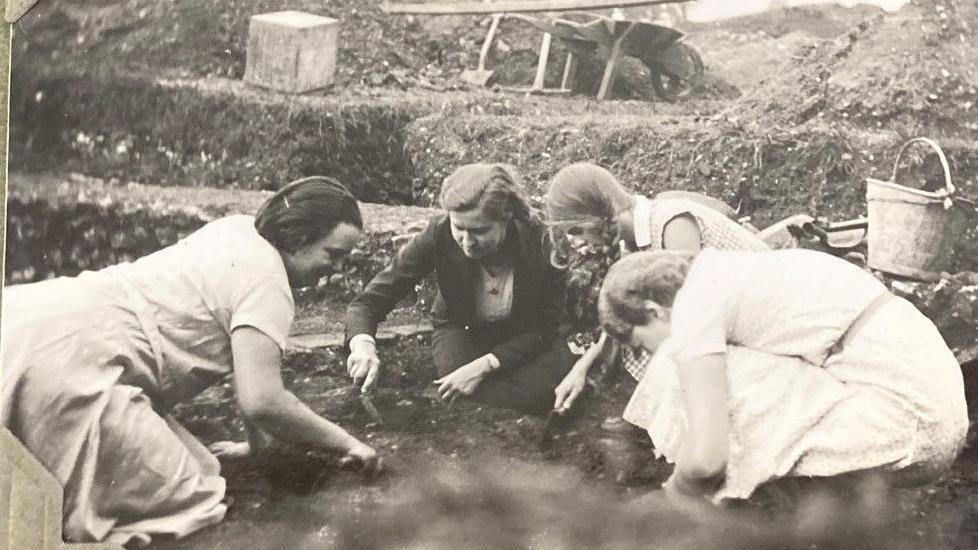Anglo-Saxon graves unearthed near historic castle

Two of the 70 graves found in Bishop's Stortford contained evidence of children and adults buried together
- Published
Graves that were unearthed during the redevelopment of a public park have been found to date back to Anglo-Saxon times.
The "exciting discovery" at Castle Park in Bishop’s Stortford, Hertfordshire, was made by archaeologists from the Museum of London Archaeology (MOLA).
Carbon-14 dating showed that two graves date back to the 10th Century, meaning they predate nearby Waytemore Castle by more than 100 years.
East Herts Council said plans for landscaping the park had been "put on hold while further investigations are carried out".

Archaeologists say the graves date back to the 10th Century, in Anglo-Saxon times
The council is hoping further funding from the National Lottery Heritage Fund will help experts to investigate the remaining 68 graves, which were uncovered last year.
Archaeologists found "juveniles through to adults" in the two shallow graves, mostly buried "with their head to the west and their feet to the east", which suggests they were Christian burials.
"Some were buried with stone ‘pillows’, but none of them contained ‘grave goods’ such as jewellery or pottery," the council said.
DNA analysis could reveal the family relationships and lifestyles – including their diet and health – as well as whether they were originally from Bishop’s Stortford.
Tee Edmonds, MOLA's site supervisor, said: "We are starting to see a pattern of extended human activity associated with Waytemore Castle.
"We have the spaces where they lived, lit fires, built structures, divided land and disposed of their food waste. We also have the spaces where they were interred.
"Further digs, analysis of the archaeological remains and dating of the bones will help fill in the gaps we have in the archaeological record."

The graves predate nearby Waytemore Castle, which was built at the time of William the Conqueror
Community excavations by the Friends of Castle Park uncovered pottery, pits, walls and postholes dating from the 11th and 12th Centuries.
This is "further evidence that people were working or living in and around Waytemore Castle," said the council.
It has backfilled the area of Castle Park where the burial were discovered to make sure the site is protected.
The leader of East Herts Council, Ben Crystall said: "It’s going to be fascinating to learn more about the early population and origins of Bishop’s Stortford.
"The excavations here at Castle Park, together with recent digs at Grange Paddocks, really highlight the rich history of this part of East Herts."
Get in touch
Do you have a story suggestion for Beds, Herts & Bucks?
Follow Beds, Herts and Bucks news on BBC Sounds, Facebook, external, Instagram, external and X, external.
- Published12 March 2024

- Published6 March 2024

- Published11 February 2024
